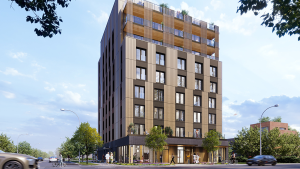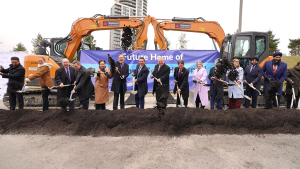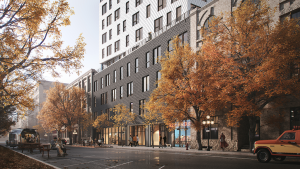One of the last construction-related get-togethers before the mid-March 2020 lockdowns across the country was the Canadian Institute of Steel Construction (CISC) Educators Forum, which took place Feb. 28-29 in Winnipeg.
The forum, which occurs every two years, is a conference of Canadian academics who teach steel design to undergraduate students of engineering and architecture.
The theme of the 2020 event was innovative steel.
One of the presentations at the forum was about Winnipeg’s Diversity Gardens (DG), which is under construction in Assiniboine Park, the Prairie city’s largest and most popular urban park.
DG is the third and final phase of the park’s redevelopment, which began in 2009.
Phase three, which is ongoing, began by demolishing the park’s conservatory, which stood in the park for more than a century and closed at the beginning of April 2018. The gardens are being constructed on the 14-hectare plot that was occupied by the conservatory.
When completed, DG will comprise three outdoor spaces and a 64,600-square-foot indoor facility called The Leaf.
The centrepiece of DG, The Leaf will feature four zones that will show visitors different climates and environments.

According to Assiniboine Park Conservancy (APC), which is responsible for taking care of the park and the zoo, The Leaf showcases Canada’s diversity as a garden of cultures “living in harmony and thriving together.”
APC says The Leaf is the first and only public garden in North America to tell Canada’s cultural stories through the world of plants.
“It’s the first conservatory project to be built in Canada in the last 25 years,” said Gerald Dieleman, the APC’s senior director of horticulture. “It’s an integrated and complex building that requires many specialty trades working together. And it’s targeting LEED Silver.”
The Leaf features an ethylene-tetrafluoroethylene cable net roof that is tensioned off a 33-metre (108-foot) tall diagrid tower which rises up through the centre of the building.
The diagrid tower is comprised of round HSS (hollow structural section) pipe and custom cast steel nodes that were designed by Toronto-based Cast Connex Corporation.
Each cast node links up six straight HSS pipe members, with the nodes giving the diagrid its shape and form.
Bird Construction, the general contractor on the project, engaged Cast Connex to engineer, detail and supply the castings.
Part of the company’s design realization process involved a node-shaping
study which used computational and 3D-printed models to show how different nodal forms affected the geometric appearance of the diagrid.
Cast Connex designers altered somewhat the original appearance of The Leaf by going with a nodal form that emphasized a vertical articulation of the diagrid’s framing.
In addition to custom designed castings in the diagrid tower, the project makes use of Cast Connex universal pin connectors and architectural tapers at the ends of architecturally exposed structural steel (AESS) struts and universal pin connectors at the ends of AESS braces at various locations in the building.
“The castings we used are unique and designed specially for the project,” said Tarana Haque, the Cast Connex project engineer on the project.
Bird engaged Supreme Steel Ltd. (Supreme) under a separate contract to fabricate and erect all of the structural steel on the project, which included receiving and incorporating the nodes into the steel framing.
Senior project manager Don Petrinchuk, from Supreme’s Saskatoon, Sask. office, says the company supplied more than 1,300 tonnes of steel for the project, all of it fabricated at Supreme’s facilities in Saskatoon, Winnipeg and Edmonton.
Petrinchuk says Supreme encountered, and overcame, a number of challenges on the project.
“To deal with the centre diagrid system’s complicated geometry, we used 3D Tekla modelling software to create shop and erection drawings,” he said. “And we exchanged models with the structural engineer to confirm the geometry and cable connection points.”
Supreme also had to figure out how to break down the centre diagrid into frames that could be fabricated and shipped to site.
“We broke down the frames into smaller pieces so they could be shipped as an over-dimensional load,” said Petrinchuk. “We made complicated jigs in the shop to control the final fit-up onsite. And we used Cast Connex for the node and connection points.”
To control fabrication and erection tolerances, Supreme used 3D scanning technology with 3D model overlays.
And to enable welding on the diagrid core tower during Winnipeg’s bitter winter conditions, Petrinchuk says Supreme installed scaffolding huts at the welded node locations and used an induction heating system to pre-heat nodes used in field welding.











Recent Comments
comments for this post are closed